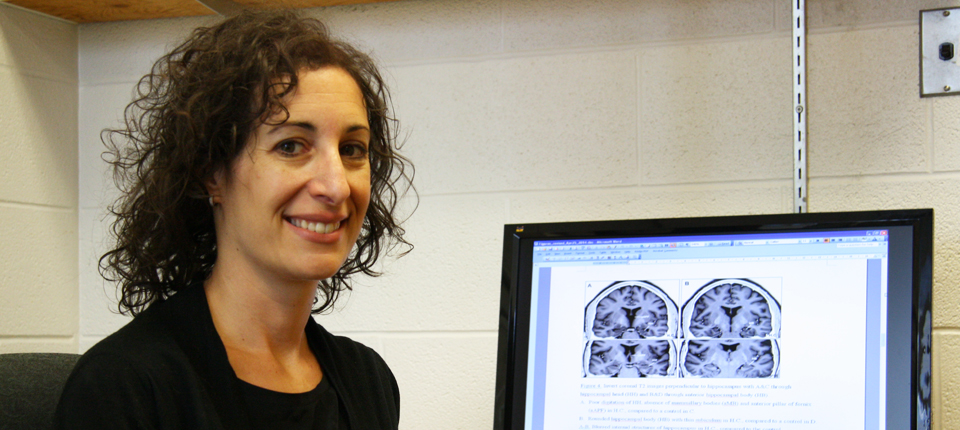Under what conditions can people with memory loss make decisions about the future?
An expert on memory, Shayna Rosenbaum studies healthy older adults and amnesic patients using cognitive tests and neuroimaging methods. In addition to spatial memory (the layout of environments) and episodic memory (recalling personal events), she examines how memory contributes to other abilities like imagining the future and thinking about other people’s mental states. Our growing aging population makes it ever more crucial to understand these processes and the basis of memory decline.
Inspiration
I’ve always been intrigued by why we remember some things and not others. But for me, a great source of inspiration was the famous case of “HM,” who many students learn about in their first year psychology classes. HM underwent surgical removal of his hippocampus to treat epilepsy, causing him to lose his memory. I was fascinated by how damage to a specific part of the brain could lead to such a profound memory loss, but leave other faculties intact. Early on, I had the good fortune of working with a similar amnesic case known by the initials KC. What was amazing about KC was that despite even more extensive brain damage, he showed an even finer distinction in memory, where his memory for specific episodes was lost, but he could remember facts about the world and himself. This gave researchers clues into how memory is not just one thing. This inspired a lot of the work that I’ve done.
Impact
We’ve found, as have others, that imagining one’s future seems to depend on certain types of memory. If you can’t remember past personal episodes, thinking about the future, and making decisions about the future, is very difficult. But we are now looking to see under what conditions certain aspects of future imagining are affected. It turns out that not all aspects of future imagining depend on episodic memory. Our research calls into question some of the current theories about memory.
Remembering past events and imagining future events are part of everyday life. It is crucial that we understand the basis of memory decline and the decline of cognitive abilities associated with memory.
We’re trying to capitalize on what we learn in the lab and apply it to people’s everyday lives, helping stroke patients and other neurological populations overcome memory loss. One example is spaced repetition, a technique that I am using in collaboration with faculty member Melody Wiseheart and postdoctoral fellow Alice Kim. If you repeat items in a list, and the repeated item is very close to the first time the item is presented, that method is less effective than if you were to space out the repeated item. We’ve worked with amnesiac people and also individuals with damage to the frontal lobes to figure out under what conditions this technique works best. We are also working with a start-up company called Axonify to apply the similar strategies to computer-based learning in the workplace.
Engaging Students
Research is a collaborative effort. The work that I do would not be possible without the students who are in my lab. I have students at all levels, including high school students completing co-op placements. My students and postdoctoral fellows are involved in all aspects of research. Students from different backgrounds see problems from different angles, and we end up with solutions that we never would have expected. Most of my students co-author papers with me, many as first author, reflecting the lead roles they take in the projects. Training students is by far the most enriching part of what I do.
What’s Next?
As we continue to investigate the role of the hippocampus and memory, we will also look at the brain at a network level. We want to understand how different parts of the brain work together to allow for different forms of memory, because it is very unlikely that a certain type of memory depends on only one structure of the brain. There are so many other variables, so many things we are still missing. This is what I hope we can uncover with our ongoing research efforts.


